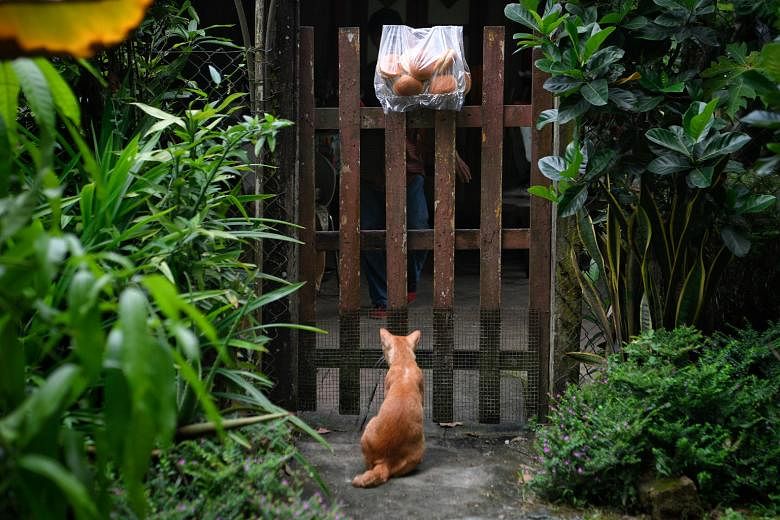She is about to drift into slumber when a smattering of voices outside her house breaks the lull.
Gently pushing her wooden front door ajar, the 85-year-old great-grandmother finds herself peering at a 62-year-old man, who identifies himself as Mr Low, and his three-year-old grandson Jaylen. Her brows are furrowed in displeasure.
Mr Low apologises profusely. He wanted to take a break under the shade of her porch, he explains.
The tanned, lanky man had ridden his e-scooter from Punggol to Kampung Lorong Buangkok, and the scorching heat is too much to bear.
The elderly woman, whose ash-grey hair is pulled back into a bun, softens her glance. Using a walker, she potters out and takes a seat on a bench on the porch.
The pair exchange a few basic Malay words, and before long, the complete strangers are talking animatedly about their families.
In the afternoon, a different kind of commotion unfolds. Throngs of curious visitors - from families to students - stream in.
Among them are 10 secondary school students who make an entrance on their yellow ofo bicycles.
Is this place haunted, a boy wonders aloud. His friends brush him off. It's bright daylight now, they chide.
Such visits have become a routine affair for the kampung dwellers, who are generally welcoming to strangers, as long as they do not cast prying eyes into the private spaces of their homes.
Many visitors, like polytechnic lecturer Aubrey Koh, 39, and his wife, enthusiastically snap photographs using their mobile phones.
Mr Koh is visiting with his two sons, aged 10 and seven, after a family lunch. "My sons know how a kampung looks like, as we drive to Malaysia often. But they've not had the chance to walk through one."
He adds: "It is a part of Singapore's history, and this is a way for them to experience it. But they get restless quite fast, with all the mosquitoes, bugs and the heat."
Many foreign tourists also find their way to the kampung, including 70-year-old retiree Jurgen Gaude from Germany, together with his wife and sister-in-law.
His daughter, who works in Singapore, had urged him to visit the kampung "before it is all gone". She had scribbled the directions by public transport on a piece of paper. But they still got lost, he jokes.
"I'm glad we made it here. I like it, it feels romantic," Mr Gaude says.
At about 3.45pm, Mr Seah Yong Choi, 55, returns home from work at a biscuit factory. He holds a plastic bag filled with hamburger buns, strolls up to Ms Sng Mui Hong's house and hangs the bag on the gate - a little token for the kampung's "towkay" and landlord.
He says: "My friend gave a lot of bags to me and I can't finish the food anyway. We like to share food among neighbours; it's not a big deal. "
Minutes later, old Hokkien songs blare from his neighbour's house, matched with punchy drumbeats.
The drumming is not from the radio, however - it is "party king" Ong Chin Hock, 57, playing his hand-me-down drum set. He picked up the skill by watching YouTube videos, he says. He also likes inviting people over to sing karaoke, hence his nickname. With a sheepish look, he adds: "I would give myself only 50 out of 100 marks. I'm not good at it, I just play (the drums) for fun."


